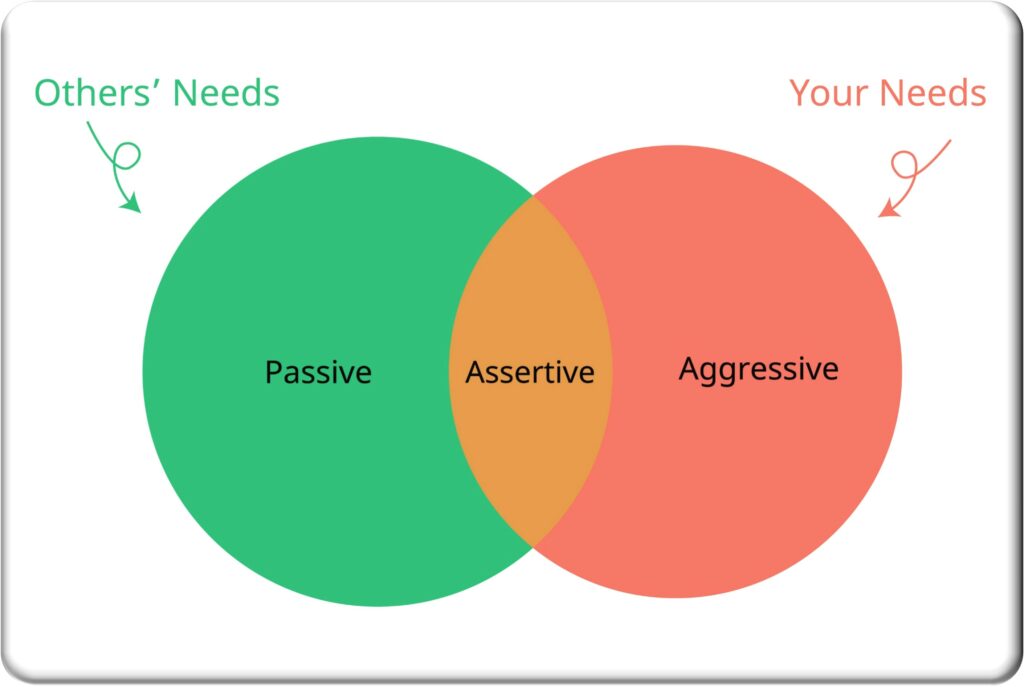
How to deal with a passive-aggressive co-worker
Business Coaching
“No offense, but that was not your best translation.”
“Surprisingly, that was a good one.”
“I did not mean to be rude, but that’s just me.”
“I do not know why you are so upset, I was just joking.”
“You just want everything to be superb.”
Heavy atmosphere and bad relationships
These are some of the typical passive-aggressive expressions that many of us have experienced with our colleagues or that we have sometimes uttered, because none of us is really immune to such communication. This type of communication may have been learned in childhood to get what we want, and we may simply not be aware of it. It may be the blind spot in our behavior, something that others see but we do not. Such communicators are passive because they are actually afraid to show their aggressiveness. At work, they like to blame others or external circumstances (e.g. tough deadlines, wars, recession) for their mistakes, find excuses when they feel uncomfortable or simply deny their level of engagement.
The list of examples could go on and on, but we recognize passive-aggressive communication simply by feeling bad or guilty for something we have no reason to be guilty for. It comes in many shapes and sizes, from extremely manipulative behavior (like gaslighting) to simple sarcastic comments that are sometimes not intentionally meant to be hurtful.
The tone that passive-aggressive communicators take is that they are pretending to help you or that they will forgive you for all your constant mistakes. This can lead to a heavy or tense atmosphere at work and consequently poor relationships. And relationships are the cornerstone of any business – the mantra we often repeat.
Non-verbal passive-aggressive communication
Passive-aggressive communication, however, can also be non-verbal. Typical examples include the so-called silent treatment (refusing to communicate verbally with someone), leaving the room in the middle of a conversation, or pretending to agree and then pouting. Silent treatment and pouting can be extremely damaging to the entire organization, as anyone dealing with people who exhibit such behavior can sense the tension. When you ask them what is going on, they normally say Oh, nothing really with unpersuasive tone. The tension further leads to misinterpretations by other team members and bad relationships.
Acting out of fear
Sometimes people act passive-aggressively out of fear or are used to such communication from childhood and are not toxic by nature. It becomes problematic when passive-aggressive communication is frequent, and you cannot avoid it because the person is employed and is a highly qualified expert whereby your work depends on his expertise. If you know such a person in your personal life, it is easiest to avoid or ignore them, that is one of the most common useful recipes.
Assertive communication is the healthiest option
The passive-aggressive communication style is one of the four styles along with the aggressive, passive, and assertive. The aggressive style is used by people who want to assert their views, needs, and desires without thinking of others. Passive communicators, on the other hand, prefer the needs of others and neglect their own.
Assertive communicators consider their own views, needs, and desires as well as those of others, and usually take full responsibility and accountability for any kind of outcome. The passive-aggressive style is a bit more complicated because such communicators are aggressive deep down, but do not overtly show it.
Recognize positive intent
The first step, then, is to recognize passive-aggressive communication and realize that the communicator may have had a positive intent, but the communication or behavior may not have been appropriate. It is difficult to determine if it is just the habitual pattern of communication or if they have negative thoughts or anger bottled up inside because you did not behave the way they expected in their own world. Or if they have a narcissistic personality disorder. And they never clearly and transparently communicated the idea.
If you believe that there is a positive intent behind the behavior, your reaction will not be so strong and you will not lose your temper. You are not crazy or as bad as the passive-aggressive communicator would have you believe.
Be self-critical as necessary
However, also be self-critical and admit failure if it is really real. Therefore, it is important to understand their motivation and also see the world through their eyes. Ask yourself:
♦ Have I really done anything wrong here?
♦ What is the person trying to achieve?
♦ What is their view of the world?
♦ Who are they actually?
It might be good to consult a third person as well, especially the one who knows the passive-aggressive communicator and what he thinks of the whole situation. The point is that if you get as much clarity as possible, you will be better able to respond to the false image that someone is trying to force on you.
Ask specific questions
When they say for example, You just want everything to be superb they are using sheer generalization and presupposition. Ask them questions like:
♦ What exactly do you mean?
♦ What do you mean by everything?
♦ What is superb after all?
This will help you not get defensive, which is often what passive-aggressive communicators expect of you. By being defensive, you are digging yourself a hole and technically admitting that you are guilty in their eyes. Concrete explanations give them trouble because they like to keep things vague. They may even use theoretical or legal references to confuse you, assuming you do not know the rules they are referring to or that you will not review the references later on.
Discuss inconsistencies
Passive-aggressive communicators thrive on inconsistency because that’s how they confuse you. Focus on the facts and pure descriptions because they cannot refute them. Don’t use emotional language because you might feel and look like a fool.
For example, after a strange situation in a meeting, you might say something like this In the meeting, you said that I would take on this assignment, and afterward, you gave the other assignment without any explanation. Could you please help me understand what I am exactly supposed to do?
Indicate that you understand their message
It is important to show that you have understood their goal, but never say that they are passive-aggressive communicators, because that can make them even angrier or even lead to retaliation. By showing that you understand what message they are trying to convey, you can improve communication in that moment, but watch out for the next situation. Consistently using the methods mentioned in this blog might improve communication and emotional intelligence. But if you find it too difficult, you might consider hiring an expert.
If you want to learn more about communication, don’t miss our training Handling difficult business conversations.










